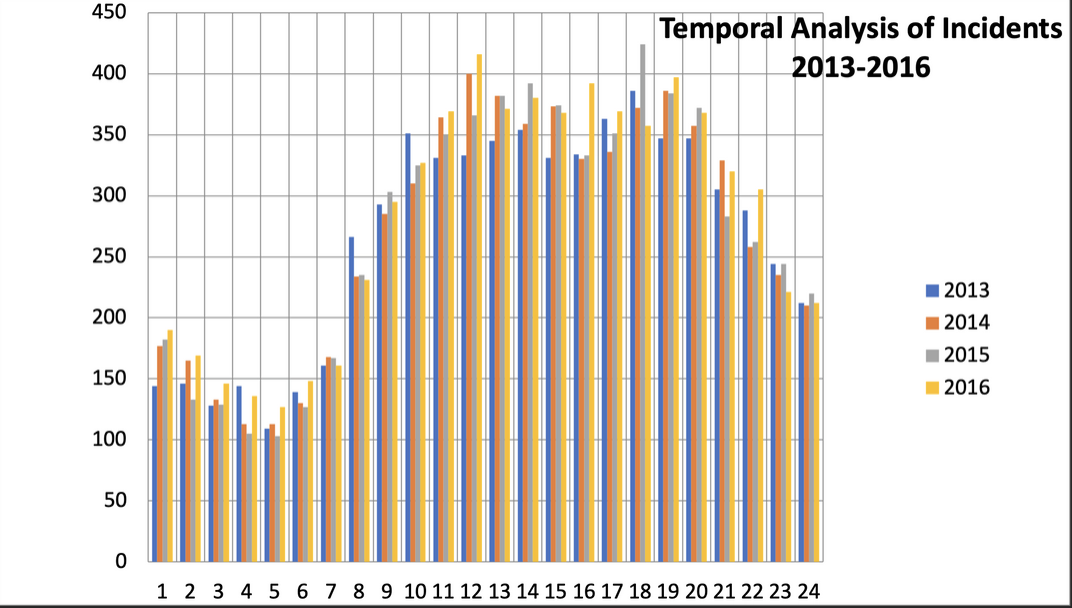Time
“Time isn’t the main thing. It’s the only thing.” Miles Davis.
There are many critical aspects to consider when developing a health and wellness program for your department (and yes, I said health and wellness, not fitness.) You can hear me riff about that topic on this recent podcast episode if you’re inclined to listen.
Briefly, aspects worth consideration include identifying needs, startup costs and follow-up funding, getting stakeholders on common ground, and many more. Click here to see some of those considerations.
However, one thing that many departments do not consider is actually a free but invaluable resource: TIME.
“Time is what we want most, but use worst.” William Penn
In the fire service, we missed the memo on time. We sport an attitude of chron-optimism. We seem to believe that we can shove 83 pounds of garbage in a 5-pound bag and then find room for 2 more pounds. We say yes to literally everything. Yes, we can do your boy scout tour. Yes, we’ll teach your CPR class. Yes, we can provide a rig for your parade. Yes, we can stand by at your 5K. Yes, we can reschedule the hospital training that’s been on the books for months to a ridiculously inconvenient day when we already have 6 things going on.
Yes. Yes. Yes.
And many administrations also say: “Yes. Fitness training is a priority. We give our personnel time to do fitness training. They’re allowed to do it in their free time.” Let me assure you that unless you SCHEDULE that free time, there isn’t any in the fire service. There’s always a vehicle to wash, a toilet to clean and a meal to be made.
Let me share an idea with you that has worked very well at my department. This isn’t my idea, nor did I particularly even like the idea initially. For 17 years, I’ve gotten up at 0350 on shift days and worked out PRIOR to coming in. I train, eat, shower, and show up for work. Then I always treated my allowed workout time on duty as a bonus. If I got it, great. If I didn’t get it, no biggie.
So, when the fitness program director approached me with the idea of doing fitness training right away in the morning, I wasn’t excited. I didn’t want to do it. Why would I? I have already trained once, showered, and gotten ready for the day. Why would I then come in and train AGAIN less than 3 hours later and then have to shower AGAIN and get ready again? And then I realized that I am atypical. There weren’t likely very many personnel on the department that are getting their training in before work. Could this crazy idea be for the greater good? So, I asked him to tell me more.
Luke had requested the stats and found that our least busy portions of the day fell between around 3 am and 9 am. What if the duty personnel came IN to work wearing their fitness clothing, completed their rig check and their exchange of information, heard about the plans for the day and then immediately went to their fitness training, prioritizing it as one of the most important items of the day?
There was a lot of dissent amongst the membership and the administration had some questions. But ultimately the plan was rolled out 1/1/2018. Nothing (other than CALLS) is supposed to conflict with the designated 0730-0900 workout time. Rigs are checked, physical fitness is completed and crews are supposed to be showered, fed and ready for anything at 0900.
For the most part, we’ve done a decent job keeping the schedule cleared. Monthly staff meetings and the occasional multi-jurisdictional drill get snuck onto the calendar. But for the most part, we are successful.
Many firefighters from various parts of the country have reached out saying that they think this is a great idea and want to get it started at their department as well. I’ve directed them all to run the stats and show their administration and membership where they are the busiest and least busy. I appeared on a webinar last week and again received a ton of questions regarding justifying this to administration and membership. Want to watch that webinar? Click here!
So, after having a conversation with my guy Joe Barnes, I have something to offer you. First off, a side note: Joe and I got hired together 17 years ago. We went to the fire academy together and were on the same shift for a decade. I got promoted and went to another shift, but came back a few years ago and we’ve been crewmates since! He’s also our IAFF L2986 Union President and a huge proponent of firefighter health and wellness. Please don’t tell him I told you this, but (shhhh): He’s also a giant stats nerd! Super handy to have one of those around!
We’re going to give you the 411 for you to pull your own stats. If you have a little more than basic Excel spreadsheet capabilities, you’ll be able to run and graph your trends yourself. If you lack these capabilities or a super friend with these capabilities, my spreadsheet genius is standing ready to help. Disclaimer: he is not free. I don’t work for free and I don’t expect my friends to either. More deets on that later.
The wording is important. Ask the appropriate authority for access to your data because you’re seeking to justify a designated physical fitness time based on call volume.
Who is the appropriate authority? Obviously, you’ll want to clear it with your fire chief, but after that it may be your IT department, upper administration or possibly even your dispatch center depending upon your particular organization.
You’re looking for a CSV (comma separated values) file containing all response incident data for at LEAST 1 year; 3-5 years is ideal for determining trends. In this case, MORE-up to 5 years is better than less.
If you are ONLY looking for busy vs less busy times to justify your physical fitness time, you’ll only need incident times, and a separate entry for each apparatus responding
If you want to be able to use your file for other information, you’ll need to include address of call, EMS vs FIRE, and nature of call
Tell you more about the “other information”? Sure. You could use your file to justify manning, daily staffing for operations, spotting trends, justifying public education initiatives, unit utilization, EMS call breakdown, etc.
Once you’ve plugged your data into your spreadsheet then you can extrapolate the information into an eye-catching graph (“Words don’t sell things, pictures do”- Joe Barnes) like above and you should be set with your busy vs non-busy times and well on your way to justifying a designated workout time. Your time may NOT be right away in the morning. But if you know when the slower call volume times of the day occur, you’ll have more success getting your physical training completed.
“Words don’t sell things, pictures do.” -Joe Barnes
If you have data, but not the skills to manipulate it, Joe can help. He can turn out a shiny pretty report for you for the low-low cost of $99. He accepts PayPal payments and you can e-mail him by clicking here!
That’s too expensive? Totally understand. But you get what you pay for! And like I said before, I don’t work for free, so I don’t ask my friends to do it either. Showing your administration and membership when you are more likely to be uninterrupted by calls is valuable if you’re making a case for a designated training time.
Until next time,
AZ OUT!


